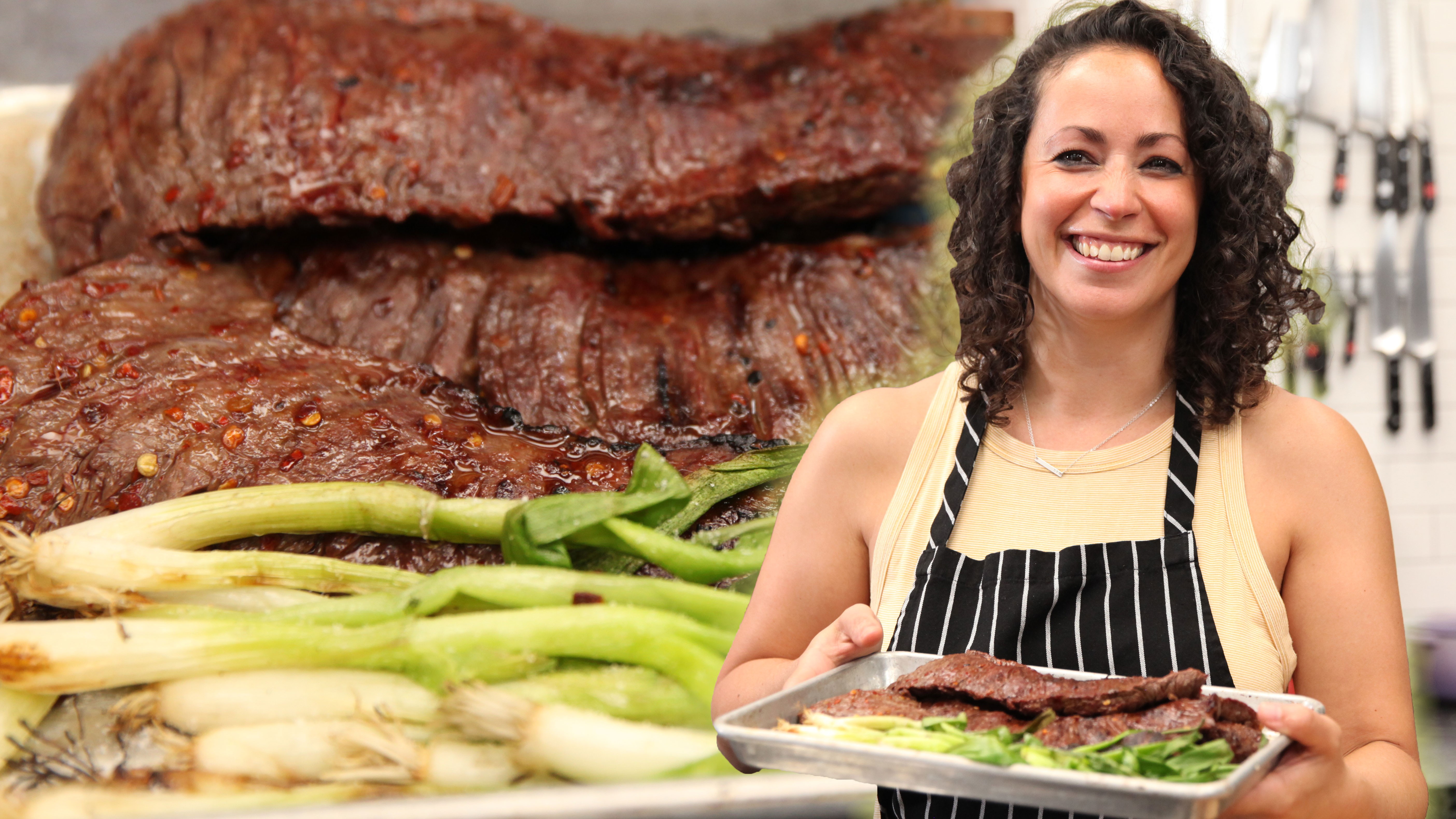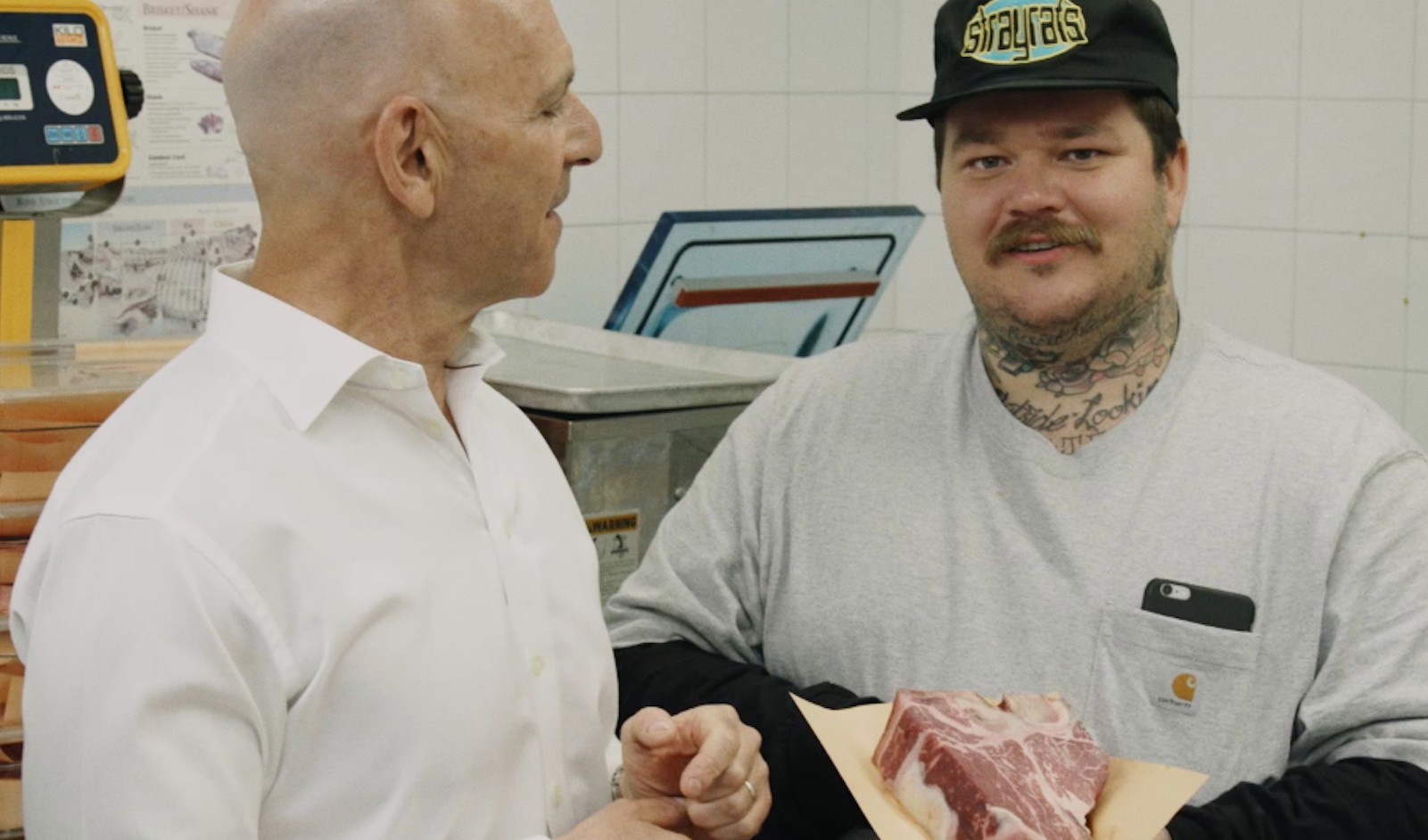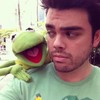This year marks the 60th anniversary of two iconic film noir thrillers: Orson Welles’ Touch of Evil and Alfred Hitchcock’s Vertigo. Both are inspired by pulpy crime novels, both star two of the biggest film actors of their era (Charleton Heston and Jimmy Stewart) as law enforcement agents caught in dark conspiracies, and both films were created by legendary auteurs whose shared hunger for bigger and more audacious projects was matched only by their limitless appetite for food and booze.
Advertisement
Welles’ meteoric rise began in his youth (using government funds to adapt a Caribbean-themed Macbeth starring an all-black cast in Harlem at age 20; producing, directing, and starring in record-smashing Broadway performances at age 22, appearing on the cover of Time magazine at age 23) and his work in radio and on stage earned him an unprecedented contract for a first-time film director from RKO Pictures: full creative control to write, produce, and direct two features with final cut privileges. His first film was no less than Citizen Kane, widely considered to be one of the greatest movies ever made. But a reputation for being demanding plagued Welles, who struggled to secure financing for many of his later films. He continued to make movies that were acclaimed ( The Magnificent Ambersons, The Lady from Shanghai, Chimes at Midnight, F for Fake) but was never able to recapture the fame of Kane; Welles began appearing in television advertisements beginning in the late ‘70s, many of which, including drunken rambling outtakes of commercials for Paul Masson wines (“Mwaaaah, the French!”) and a disgruntled audio reel for frozen peas (“This isn’t worth it, no money is worth it!”) have become famous and continue to find new audiences on YouTube.Like Welles, Hitchcock also worked in film from an early age, designing Paramount Pictures title cards at age 20 and directing his first film at 26. Spy capers (The 39 Steps, Secret Agent, Sabotage) and murder mysteries (Young and Innocent, Shadow of a Doubt) he directed in the 1930s and 40s gave way to horror films (Psycho, The Birds) and thrillers (Dial M for Murder, Rear Window, North by Northwest) through the 1950s and 60s that would become Hitchcock’s trademark. His other trademark was being an asshole. Hitchcock would throw dinner parties where everything from the trout to the chicken was dyed blue, and he’d secretly ply his teetotaling guests with strong alcohol. He once locked an actress with a fear of fire in a phone booth that he then filled with smoke, and when he wasn’t making sexual advances at actress Tippi Hedren while filming The Birds, he was attacking her with actual live birds. He later gave Hedren’s six-year-old daughter, future actress Melanie Griffith, a disturbingly accurate wax doll of her mother in a miniature coffin, dressed as her character from the film.
Advertisement
Both Welles and Hitchcock were larger than life, in both figurative status and literal size. According to their biographers, their average dinners consisted of two steaks and a pint of Scotch for Welles, and three steaks and three bowls of ice cream for Hitchcock. “There are two kinds of eating — eating to sustain and eating for pleasure. I eat for pleasure,” quoted Hitchcock in the Writer’s Almanac. Said Welles of his diet: “My doctor told me to stop having intimate dinners for four, unless there are three other people.”In addition to 2018 being the commemorative year for two of Welles’ and Hitchcock’s most famous films, today also marks the 80th anniversary of Orson Welles’ 1938 radio adaptation of H. G. Wells’ 1898 novel The War of the Worlds, where the dramatist terrified American audiences with a live series of seemingly real news bulletins that announced a full-scale alien invasion of the United States. In the spirit of also experiencing a terrible, devastating crisis, I decided to eat dinner like Welles and Hitchcock. Is eating a minimum of two steaks every night the secret to tapping into one’s creative genius? Does drinking a pint of Scotch and three bowls of ice cream lend itself to untold filmmaking and narrative abilities? What hidden worlds lie just beyond a few dozen ounces of beef?For this expedition in shameless excess, I decided to visit two steakhouses, figuring neither Welles nor Hitchcock actually cooked their own steaks themselves. To eat like Hitchcock, I wanted a restaurant that could channel the director’s regal persona, so I settled on Morton’s, figuring the dapper decor would’ve suited him. For Welles, I thought about finding another elegant destination but then I thought about his War of the Worlds broadcast that shocked the nation. How many of his listeners were likely driving in cars or listening to their radio at home in the country and small towns, fearing what they only assumed was the complete destruction of America’s major cities (people in New York could simply look out their window and see that nothing was wrong). A more rural-style steakhouse seemed appropriate, so I went to Black Angus Cattle Company.
Advertisement
At Morton’s, the waitress jovially presented me with the menu and told me the specials, with no idea of the sinister plot I had formed before arriving. I felt like Gavin Elster from Vertigo; just as he tricked San Francisco detective John “Scottie” Ferguson into believing his wife Madeleine committed suicide by leaping from the top of a church bell tower, so too was I tricking my waitress into believing I was here for just an ordinary meal. I ordered a 16-ounce ribeye, it arrived medium rare and delicious and I ate it, then I ordered some vanilla ice cream. My waitress asked me if I’d like anything else.“I’m really peckish tonight,” I said, repeating Hitchcock’s literal words to a waiter once at Chasen’s in West Hollywood. “Do it again.”
She looked confused. Was I ordering another bowl of ice cream? I told her I wanted another steak. This time, a 10-ounce Manhattan cut. (I couldn’t handle another ribeye.) My waitress was surprised but put in the order. When it arrived, I ate it, ordered another ice cream, and ate that too.“You must’ve been hungry!” The waitress said, the next time she returned to my table.“I’m still hungry,” I lied. “Let’s do it again.”She stared at me blankly for a moment. I told her I specifically wanted the 6-ounce filet mignon and she put in the order. By the time it arrived, I had been sitting (and eating) here for nearly two hours. The first steak was tasty and easy; the second was arduous but manageable. When the filet arrived, I just stared at it for a few minutes. My eyes were confused: where do these steaks keep coming from? And why do I keep eating them? Like Vertigo’s detective Scottie, I tried to put the pieces together in my mind. But my mystery wasn’t about uncovering the murder of a man’s wife. It was about the murder of my very soul.
Advertisement

Vertigo is a film about the dangers of romantic delusion and obsession, death as something both terrifying and appealing as an escape for some, and the masks people wear to conceal their true nature, even to themselves. Going into this dinner, I romanticized the idea of sharing Hitchcock’s dinner, this brash and unabashed feast of meats and sweets. Leaving Morton’s, I felt woozy. Was it vertigo? Perhaps. Most likely it was the combined 2,310 calories, 100-plus grams of fat, and thousands of milligrams of sodium sitting in my gut. While the detective in Vertigo was unable to move beyond the dead wife to find love with Judy, the woman who helped cover up Madeleine’s death, I was unable to simply imagine the horror of eating three rounds of steak and ice cream; I had to experience it for myself. In the film, the detective asks Judy to dye her hair and dress up as Madeleine, who he has become fixated on and obsessed about. And here I was, also fixated on a recreation—of a dead man’s fatty-ass meal from over 50 years ago.
Advertisement
Things only became more complicated when I visited Black Angus for Orson Welles’ two-steaks-and-a-pint-of-Scotch dinner, and added booze to the equation. Although I was able to save a few bucks; I ordered the “Campfire Feast for Two” dinner combo that came with two steaks, four side dishes, and an appetizer and dessert to share (I gave everything that wasn’t the two steaks to a buddy of mine who came to watch this nightmare) and I smuggled in a pint’s worth of Scotch in a water bottle because I didn’t want to pay a hundred bucks ordering 11 shots at $9 each.
After suffering through three consecutive steaks, eating only two seemed like a cake walk, but the alcohol complicated things. For one, I couldn’t just sip the Scotch like a normal person; I instead tried to take random gulps here and there while the waiters weren’t looking. Another factor was that in order to have enough room for two steaks, it meant I hadn’t eaten much else throughout the day, leaving me to enjoy my Lagavulin and beef on an empty stomach.
Looking at the menu, I realized I might be able to get away with eating two steaks without having a heart attack by ordering filet mignons. The average 6-ounce filet has just roughly 450 calories and 44 grams of protein. Two of these do add up to close to 60 grams of fat (92% of your daily value based on a 2,000-calorie diet) which is a hell of a lot, but not unmanageable. But Orson Welles wasn’t eating two steaks a night because he wanted to be sensible. So instead, I order the 16-ounce “Full-Flavored” ribeye (1,240 calories and both 100 grams of protein and fat) and the 14-ounce New York strip steak (763 calories with 49 grams of fat and 82 grams of protein). Let’s do this.
Advertisement
In Touch of Evil, Mexican drug enforcement official Miguel “Mike” Vargas investigates a car bomb from Mexico that was snuck across the border and detonated on American soil, knowing the implications it could mean. In real life, I myself was the perpetrator of crime, sneaking Scotch into the Cattle Company. I do a pretty good job finishing the first steak with about half the Scotch, but I’m eating and drinking too fast. It’s been less than an hour and I’m six shots in, feeling pretty sloshed. I start on the second steak and wonder if the Touch of Evil character I’m closest to is now instead sweating, drunken police captain Hank Quinlan, played by Welles, who plants evidence to close cases. Like Quinlan, who tries to control the local investigation of the car bomb—first by planting dynamite in a suspect’s home, then by attempting to discredit Vargas by framing his wife for murder—I’ve been supervising this shady situation of my own, between the steaks and the booze and sliding off appetizers and dessert to my friend. At one point, I accidentally knock the water bottle filled with Scotch off the table where it rolls into the walkway; a server carrying plates nearly trips over it. “You’re a great drinker all right,” my friend said, echoing the words of Marlene Dietrich’s tarot reader from Evil. “But a lousy drunk.”I finish the steaks and the rest of the Scotch. Lucky for me (unlike Captain Quinlan), my booze ruse was never discovered and I was able to stumble out of Black Angus scot-free. Although I still generally felt like garbage. Just one meal like Orson Welles and I was ready to die. It’s hard to imagine eating like this for one night, let alone as a daily meal. But in a poetic way, it somehow fits Welles and Hitchcock, two men for whom too much was never enough. Hitchcock was older than Welles by 16 years, but Welles had risen up (and then faded) faster than Hitchcock in Hollywood; it’s also believed that the two men’s films helped to (begrudgingly) inspire one another in turn. Hitchcock’s 1940 film Rebecca began with a slow, foreboding approach to a darkened palatial estate and ended with a blazing fire that consumes an all-encompassing emblem of the tragic hero, both elements later incorporated (Xanadu and Rosebud) in Welles’ 1941 magnum opus Citizen Kane. Meanwhile, Welles’ Touch of Evil in 1958 included a long dolly shot across the length of a town, the casting of Janet Leigh who becomes a victim trapped in an evil place, and a shifty, uncomfortable motel operator—all facets recreated in Hitchcock’s groundbreaking Psycho, released just two years later in 1960. Could Hitchcock’s three steaks have been getting one up on Welles’ two steaks? Was drinking an entire pint of Scotch Welles’ way of out-drinking Hitchcock, who sometimes ended meals with a bit of bourbon? At the very least, the two directors put one over on me, the poor sap who insisted on eating to match the legends.
It’s hard to imagine eating like this for one night, let alone as a daily meal. But in a poetic way, it somehow fits Welles and Hitchcock, two men for whom too much was never enough. Hitchcock was older than Welles by 16 years, but Welles had risen up (and then faded) faster than Hitchcock in Hollywood; it’s also believed that the two men’s films helped to (begrudgingly) inspire one another in turn. Hitchcock’s 1940 film Rebecca began with a slow, foreboding approach to a darkened palatial estate and ended with a blazing fire that consumes an all-encompassing emblem of the tragic hero, both elements later incorporated (Xanadu and Rosebud) in Welles’ 1941 magnum opus Citizen Kane. Meanwhile, Welles’ Touch of Evil in 1958 included a long dolly shot across the length of a town, the casting of Janet Leigh who becomes a victim trapped in an evil place, and a shifty, uncomfortable motel operator—all facets recreated in Hitchcock’s groundbreaking Psycho, released just two years later in 1960. Could Hitchcock’s three steaks have been getting one up on Welles’ two steaks? Was drinking an entire pint of Scotch Welles’ way of out-drinking Hitchcock, who sometimes ended meals with a bit of bourbon? At the very least, the two directors put one over on me, the poor sap who insisted on eating to match the legends.

In the decades since Welles’ War of the Worlds radio broadcast—which simulated an alien invasion, complete with sounds of cannon fire and field artillery; emergency broadcasts by reporters, witnesses, astronomy professors, and a fake Secretary of the Interior; and even famed Hollywood conductor Bernard Herrmann posing as “Ramon Raquello,” whose orchestra performance is constantly being put on pause for alerts about aliens—historians have debunked the rumors that there was widescale panic and deaths by panic, suicide, or stampede from listeners tuning into the program. While Princeton professor Hadley Cantril calculated at the time (and published in a 1940 study) that some six million people heard the show and 1.7 million believed The War of the Worlds was a literal news bulletin, media scholars say actual estimates should’ve been less than half that. And although the listening audience may have been “excited” and “frightened” as documented by Cantril, investigators Jefferson Pooley and Michael Socolow later concluded that the audience was still aware the broadcast was being staged. Hospitals in New York City and Newark reported no spike in admissions on the night of the broadcast and a Washington Post claim that someone died of a heart attack due to listening to the program couldn’t be verified. Lawsuits against CBS were dismissed and the FCC didn’t even punish Welles or the station. In fact, the FCC barred complaints about the show from being mentioned during license renewals. Pooley and Socolow consider Janet Jackson’s wardrobe malfunction at the 2004 Super Bowl far more significant in the history of broadcast regulations than The War of the Worlds.Welles himself was initially apologetic about the alleged panic (and believed his career was over) but he eventually came to embrace the ordeal in his personal mythology: “From Nashville to Minneapolis there was wailing in the streets and the rending of garments,” he later described in an interview with filmmaker and historian Peter Bogdanovich. So much of Welles’ achievements and identity, like Hitchcock, have become part of a larger-than-life legacy. But like the War of the Worlds radio broadcast panic, how much has been trumped up over the years for the sake of legend? And what parts—like eating multiple steaks for the sake of distinction—deserve to be mercifully left in the past?
